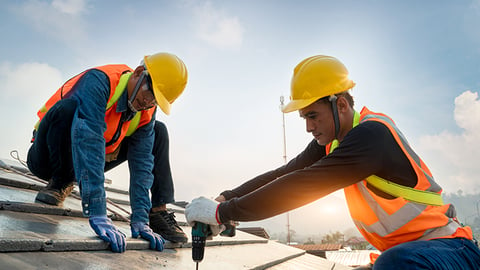NAHB continues the fight for affordable housing
The National Association of Home Builders (NAHB) recently commended Senate Banking Committee Chairman Sherrod Brown (D-Ohio), Ranking Member Tim Scott (R-S.C.) and their fellow committee members for making housing the focus of the panel’s first hearing of the new Congress and recognizing that market-based solutions are needed to boost the production of affordable housing and ease the nation’s housing affordability crisis.
“We applaud the committee for making housing a top national priority and allowing NAHB to share its views on the barriers the residential construction industry faces to increase the production of quality, affordable housing,” NAHB Chief Economist Robert Dietz said while testifying before Senate lawmakers last week. “Building more homes and apartments is the only way to tame inflation, satisfy unmet demand, achieve a measure of price stability in the for-sale and rental markets, and ease America’s housing affordability crisis.”
The primary challenge of the housing market is a lack of attainable, affordable housing in both the single-family and multifamily markets stemming from a lack of construction over the prior decade that has resulted in a structural deficit of 1.5 million residences, the NAHB said.
“The causes of this underbuilding are multifaceted and complex, but we commonly cite them as the ‘five Ls’ – a lack of labor, lots, lumber and building materials, lending for development and construction purposes, and legal and regulatory barriers,” Dietz explained.
Last year was the first time that single-family starts declined in 11 years, falling an estimated 12% to 999,000 units.
At the International Builders’ Show in Las Vegas earlier this month, the NAHB projected that single-family production will fall to 744,000 units in 2023 before rebounding to a 925,000 annual pace in 2024.
The 2022 and 2023 declines appear dramatic since production had been running at a very solid level above a 1.1 million annualized pace through the first quarter of 2022 before beginning a steep decline as mortgage rates rose rapidly and the housing market weakened.
Solving all these problems is critical to bending the affordability curve as Dietz cited the following facts:
- The construction sector faces a persistent labor shortage, with more than 400,000 unfilled industry jobs.
- Regulatory costs account for about a quarter of the purchase price of a new single-family home and even more for apartment buildings due to delay costs and zoning issues, and these regulatory burdens have made it very difficult to build entry-level housing for first-time home buyers.
- Due primarily to supply chain disruptions, construction material costs are up 36% since the start of 2020, ultimately resulting in higher rents and home prices.
Nearly one-third of renters were cost burdened in 2020 according to Census data. Reducing these burdens requires building additional housing.
“Unfortunately, construction of new, affordable rental housing is often impossible without some type of public support, such as the Low-Income Housing Tax Credit or tax-exempt bond programs,” said Dietz.
On the multifamily front, construction boomed in 2022, up an estimated 15% from the previous year to 545,000 apartment starts. Because of slowing rent growth, rising unemployment, tighter financing and a decades-high level of inventory in the pipelines, supply constraints that have caused a large backlog of projects, NAHB is projecting that multifamily starts will fall 28% this year to a 391,000 total and will stabilize in 2024 at about 374,000 starts.
There are currently more than 940,000 apartments under construction, the highest total since 1973, according to the NAHB.
But with home buyers experiencing a doubling of the 30-year fixed-rate mortgage over the past year as the Federal Reserve continues its fight against inflation, single-family for-sale affordability has plummeted.
According to the latest NAHB/Wells Fargo Housing Opportunity Index, just 38% of new and existing single-family homes are affordable to families earning the U.S. median income of $90,000. This is the lowest affordability measure on this index in the post-Great Recession period.
Dietz called on Congress to use its legislative tools to help improve affordability for both renters and home buyers, and said this will also help to fight inflation.
“Passing legislation to alleviate supply-side bottlenecks, ease burdensome federal regulations, and promote careers in the skilled trades would increase home construction, expand housing inventory and lower inflation,” Dietz said. “However, if action on these issues is delayed, housing costs, which are roughly 40% of the Consumer Price Index, will continue to be persistent drivers of inflation, and remain a burden on American families."



